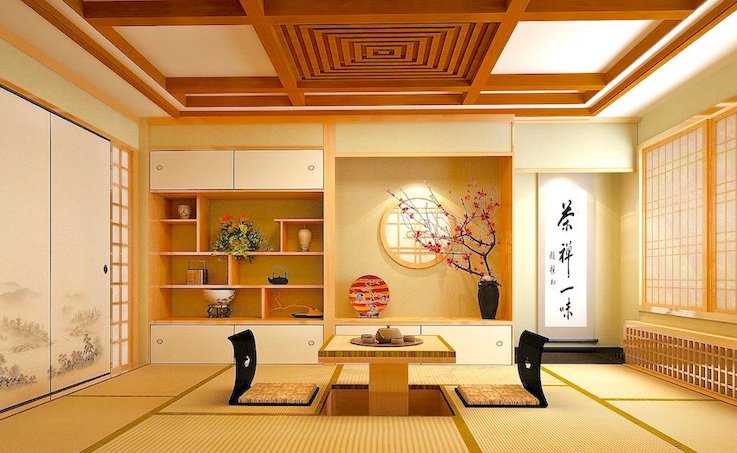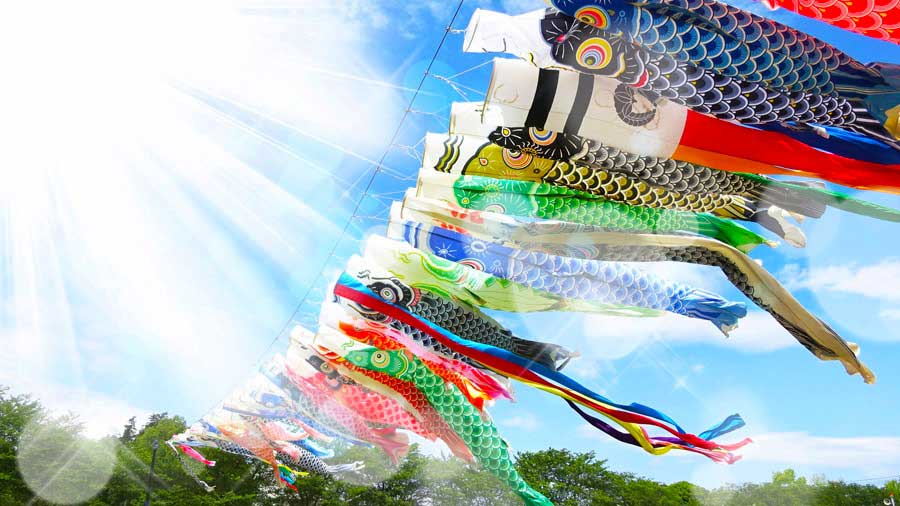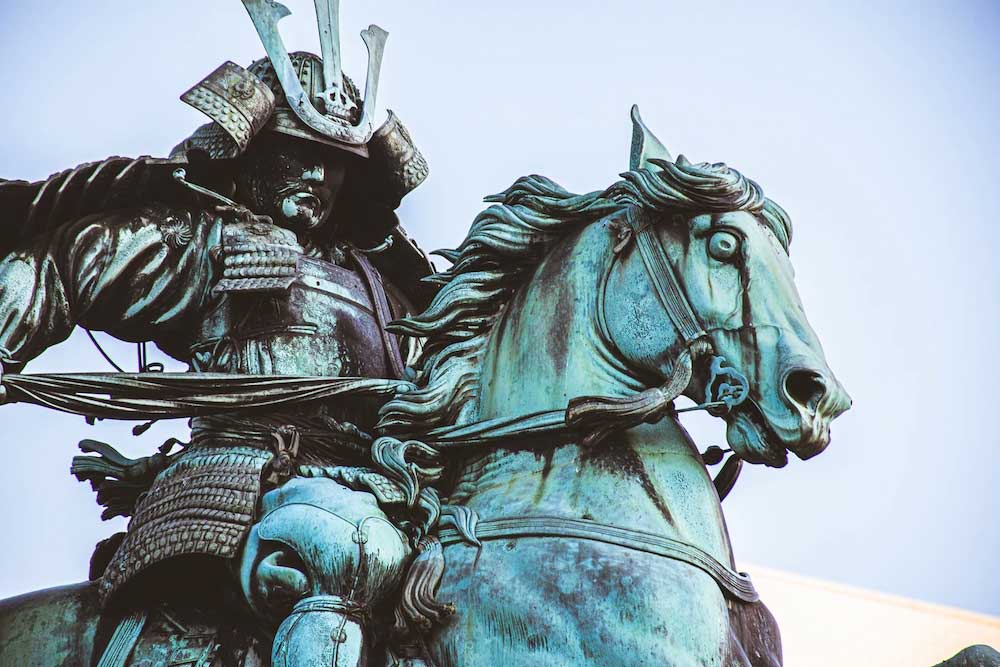
戦国時代から江戸時代まで、戦うことを生業としていた日本の侍たち。身分制度「士農工商」の「士」にあたり、日本を統治する最高位の階級でした。
今回は、海外でも忍者と並ぶほど人気の Samurai について、英語で簡単に説明する表現をご紹介していきます。
ご興味のある方は、当サイトで 英語クイズ(5000問) を出題しておりますので是非ご覧ください。
目次
侍の簡単な説明
“Samurai” is a Japanese warrior who served a feudal lord during periods of civil war and is also called “bushi.”
(侍とは、日本の戦国時代に大名に仕えた武人で、「武士」ともいいます。)
“Bushi” is a soldier whose occupation is to fight a battle.
(武士は戦うことを生業とする戦士です。)
The Japanese term samurai comes from the verb “saburau,” meaning “to serve someone.”
(侍の語源は動詞の「さぶらう」で、「人に仕える」という意味があります。)
Samurai originally served nobles as security guards, but in the late 12th century, aristocrats lost their power, and the warriors established their own military government called the “bakufu.”
(武士はもともと警備兵として貴族に仕えていましたが、12世紀の終わり頃に貴族が力を失い、武士たちは自ら「幕府」と呼ばれる軍事政権を確立しました。)
During the Sengoku period, the age of provincial wars, the samurai families that ruled Japan in regional divisions fought for supremacy as Sengoku feudal lords.
(戦国時代には、日本各地を統治していた武士の一族が戦国大名として覇権争いをしました。)
In the Edo period, people lived in a social system of four classes called “shinōkōshō.”
(江戸時代の人々は「士農工商」と呼ばれる4階級の身分制度の中で生活していました。)
Shinōkōshō was composed of warriors (Shi), farmers (No), artisans and craftsmen (Ko), and tradesmen (Sho).
(士農工商は、武士、農民、職人、商人から成っていました。)
Shinōkōshō is the four classes of warriors, farmers, craftsmen, and merchants in the Edo period in Japan.
(士農工商とは、武士、農民、職人、そして商人からなる日本の江戸時代の身分制度です。)
Samurai were at the top of society, acting as moral examples for others to follow.
(武士は他の人が従うべき道徳的な模範として行動していたため、社会の最高位でした。)
In 1867, Shogun Tokugawa Yoshinobu gave the reinstatement to Emperor Meiji, and the era of samurai rule over Japan ended (the Meiji Restoration).
(1867年に将軍徳川慶喜が明治天皇に大政奉還して、武士が日本を統治する時代は終わりました)。
With the Meiji Restoration, the Edo Bakufu (Tokugawa shogunate) collapsed, and the social rank of samurai disappeared with it.
(明治維新で江戸幕府は崩壊し、武士という身分もなくなりました。)
武士道精神 / Samurai spirits
The Japanese term “Bushidō” is a moral code of samurai that came into common use from the Muromachi period to the Edo period.
(武士道は、室町時代から江戸時代にかけて一般的に使われるようになった侍の道徳的規範です。)
“Bushidō” involves not only martial spirit and skill with weapons but also loyalty to one’s lord, justice, a sense of honor, compassionate empathy, and the courage, if required, to sacrifice one’s life in battle or ritual suicide, “seppuku.”
(武士道には、武術や武器の技術だけでなく、君主への忠誠、正義、名誉、惻隠、そして事あるときは、戦に命をかけたり、切腹する勇気も含まれています。)
A sense of honor and shame are also part of bushido, with honor seen as more precious than life itself.
(加えて、名誉と恥の意識もあります。名誉は命よりも重いのです。)
Dying an honorable death was also of great importance to warriors who practiced seppuku, a form of taking one’s own life when taking responsibility for one’s own actions or punishing oneself.
(名誉ある死を遂げることも、自分の行動に責任を負ったり、自分を罰したりするときに自ら命を絶つ切腹を行う武士にとっても非常に重要でした。)
“Seppuku” is a method of taking one’s own life that was considered an honorable death among the feudal Japanese samurai class.
(切腹は、日本の武士階級の間で名誉ある死と見なされていた、自らの命を絶つ方法です。)
A samurai who lost a fight considered it a disgrace to be beheaded by the enemy, and thus he committed seppuku before he was caught by the enemy.
(武士は敵に首を取られることを不名誉とし、敵に捕まる前に切腹をしました。)
A samurai sometimes had to commit seppuku when he caused a scandal.
(武士は不祥事を起こすと切腹をしなければならないこともありました。)
By the time of the Edo period, seppuku had become one of the five grades of punishment for wrongdoers among the samurai class.
(江戸時代には、切腹は武士階級の罪人に対する5階級の刑罰のひとつになりました。)
When the site had been readied and the witnesses, inspectors, and “kaishakunin” (assistant) assembled, the doomed man would open his kimono, stretch out his right hand to grasp his knife and cut into his belly from left to right.
(場が整い、立会人、検視役、介錯人がそろうと、武士は着物をはだけ、右手を伸ばして刀をとり、左から右にお腹を切ります。)
Kaishakunin is an inevitable part of seppuku, since once the belly is cut, people suffer for a long time, and so the kaishakunin assists the person’s death by cutting off the neck of the person committing seppuku.
(切腹にはこの介錯人が不可欠で、お腹を切ると長い間苦しむので、介錯人が首を切り落とすのです。)
Upon the man’s making a prearranged signal to his kaishakunin (assistant), the kaishakunin’s sword would slash down, severing the head.
(本人から、予め打ち合わせてある合図をし、介錯人が刀を振り下ろします。)
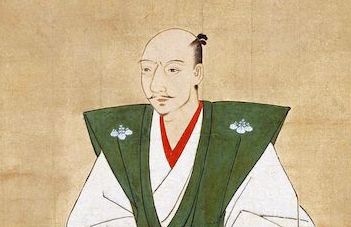
武士は食わねど高楊枝
お腹が空いていても楊枝をくわえて、食べ終わったかのように振る舞う、つまり「辛い状況にあっても名誉と誇りを忘れない」という武士のあり方を表した言葉です。
直訳すると
- A samurai uses a toothpick even though he has not eaten.
- Even when starving, a samurai acts as if he is full.
などの言い方がありますが、
A noble-minded man will never lose his honor and pride, even in poor circumstances.
(高潔な者は貧しいときでも名誉と誇りを失うことはない。)
と表現することが出来ます。
鎧と刀
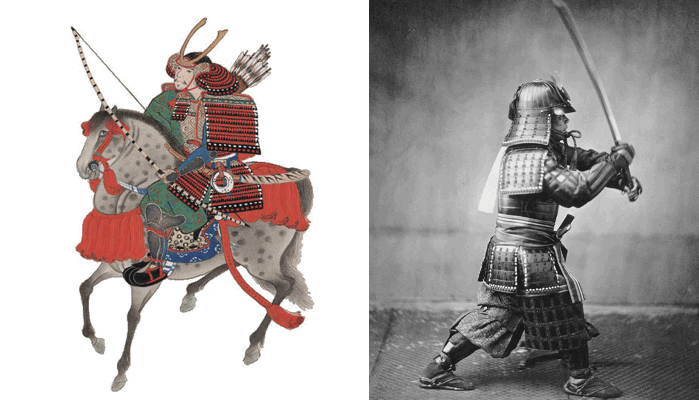
Armor, helmets, and swords worn by samurai were not only used during battle but were also traditional crafts to be appreciated for their workmanship and the spirit of their makers.
(武士が身につけていた甲冑、兜、刀は、戦時だけでなく、職人技と職人の精神が評価され、伝統工芸品として使われていました。)
Katana is a Japanese sword forged through an original method by an artisan called “tōkō.”
(刀は、刀工と呼ばれる職人によって独自の手法で鍛造された日本の刀剣です。)
The Japanese sword is single-edged and curved.
(日本刀は片刃で反りがあります。)
Generally, the hilt is long and made to be held with both hands.
(一般に柄が長く、両手で使用します。)
Katanas were thought to be the soul of a samurai warrior, and they were a symbol of samurai society until the Edo period.
(刀は武士の魂とされ、江戸時代までは武家社会の象徴でした。)
After the Meiji Restoration, possession of a katana became prohibited.
(明治維新後、刀の所持は禁止されました。)
In recent years, katanas have become increasingly popular as works of art instead of weapons.
(近年、刀は武器ではなく芸術作品としてますます人気が高まっています。)

